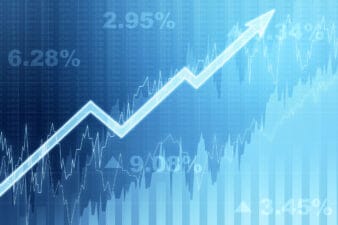Bombardier, Inc. (TSX:BBD.B) has been in a holding pattern for most of the past three months, and investors are wondering if the stock could resume its spectacular surge.
Let’s take a look at the current situation to see if Bombardier deserves to be on your buy list.
Earnings
Bombardier just reported a Q2 net loss of US$490 million as compared to a net profit of US$125 million in the same period last year.
That doesn’t sound very good, and it isn’t, but the ugly number was widely expected.
Revenue slid 7% to US$4.3 billion in Q2, and the company burned through nearly US$500 million in cash. This was actually better than the US$808 million cash shortfall the company reported for Q2 2015.
CSeries
Bombardier’s woes over the past few years are primarily connected to the company’s CSeries jet program.
The project has suffered multiple delays and is at least US$2 billion over budget. The first plane was delivered at the end of June–nearly three years behind schedule.
Earlier in 2016 the situation looked hopeless. Bombardier hadn’t secured a new CSeries order since the fall of 2014, and investors pretty much gave up hope.
As the stock fell below $1 per share, pundits were starting to question whether or not the company was headed for bankruptcy.
Then the orders started to roll in, and the share price took off.
Air Canada started things off in February with a letter of intent to purchase 45 CSeries jets. The deal was on thin ice for a few months, but the airline finally firmed up the order in late June.
Air Baltic shifted an option for seven planes to a firm order in early April, and Delta Air Lines announced a mega-deal for 75 CSeries jets at the end of that same month.
The new orders pushed the backlog above Bombardier’s target of 300 CSeries planes and brought investors back into the stock. By the end of April the shares had topped the $2 mark, and they have pretty much stayed there ever since.
Cash concerns?
Bombardier appears to have stabilized, but investors should be careful about hopping on board.
The company is still burning through significant cash, although it says it has sufficient funds to meet its needs in the near term.
Quebec’s pension fund (CDPQ) pitched in US$1.5 billion earlier this year for a 30% stake in Bombardier Transport. The Quebec government is providing an additional US$1 billion in exchange for a 49.5% stake in the CSeries program.
The US$2.5 billion will help, but the company has to keep its consolidated quarterly cash position above US$1.25 billion according to its agreement with the CDPQ. Cash and cash equivalents sat at US$3.34 billion at the end of June.
If the burn rate continues at the current pace, Bombardier will need additional funds in the next 12-18 months.
The US$9 billion in debt is also a concern. No notes are due next year, but US$1.4 billion has to be repaid in 2018.
Should you buy?
Bombardier took a US$492 million “onerous” contract charge in the quarter connected to the sale of 127 planes. Analysts believe Bombardier had to drop its price as much as 75% to get the Delta deal, so there is a concern that new orders could be tough to come by at favourable margins.
Bombardier is also struggling to meet its obligations on a streetcar order for Toronto and recently lost two big rail contracts in the U.S. to a State-owned Chinese competitor.
Metrolinx just gave Bombardier a new $428 million order for 125 commuter rail cars, so the company is still getting business from the Greater Toronto Area, but investors should be concerned about the company’s ability to compete in the United States.
New CSeries orders could send the shares higher, but Bombardier is far from being out of the woods. At this point, I would avoid the stock.







